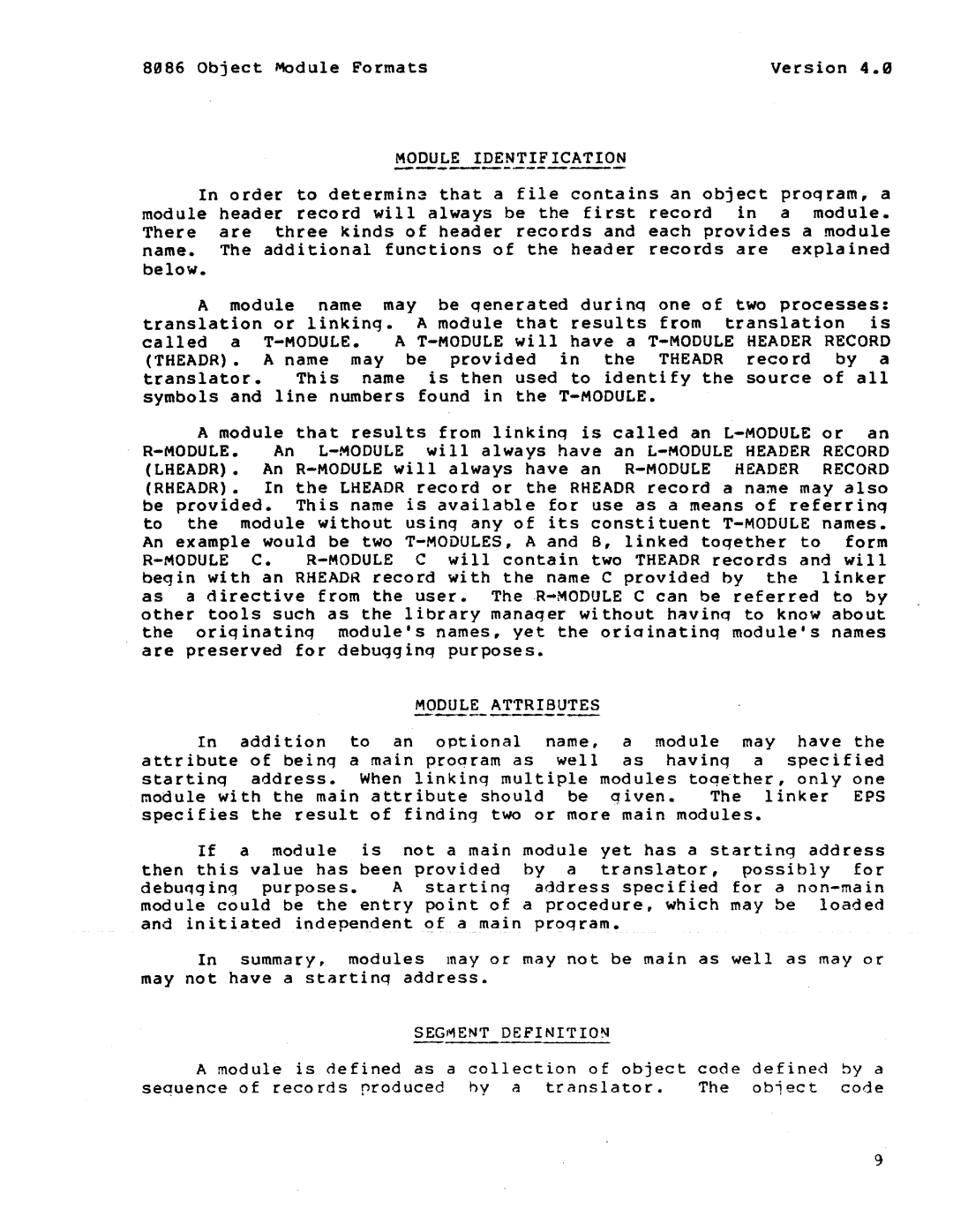
8086 Object Module Formats | Version 4.9 |
MODULE IDENTIFICATION
In order to determin~ that a file contains an object program, a
module header record will always be the first record in a module. There are three kinds of header records and each provides a module name. The additional functions of the header records are explained below.
A module name may be qenerated durinq one of two processes:
translation or linking. A module that results from translation is
called a
translator. This name is then used to identify the source of all symbols and line numbers found in the
A module that results from linkinq is called an
(RHEADR). In the LHEADR record or the RHEADR record a name may also be provided. This name is available for use as a means of referrinq to the module without usinq any of its constituent
MODULE ATTRIBUTES
In addition to an optional name, a module may have the attribute of beinq a main program as well as havinq a specified starting address. When linking multiple modules tog~ther, only one
module with the main attribute should be given. The linker EPS specifies the result of finding two or more main modules.
If a module is not a main module yet has a starting address then this value has been provided by a translator, possibly for
debuqginq purposes. A starting address specified for a
In summarYr modules mayor may not be main as well as mayor may not have a startinq address.
SEGMENT DEFINITIO~
A module is defined as a collection of object code defined by a
seauence of records produced hy a translator. The obiect code
9
